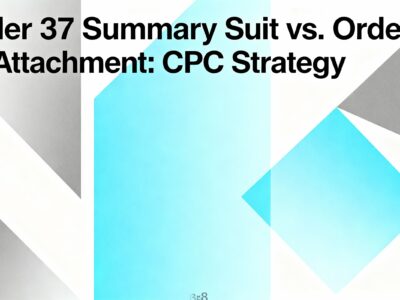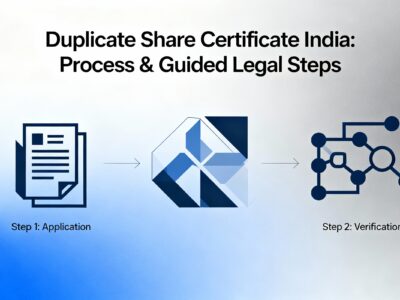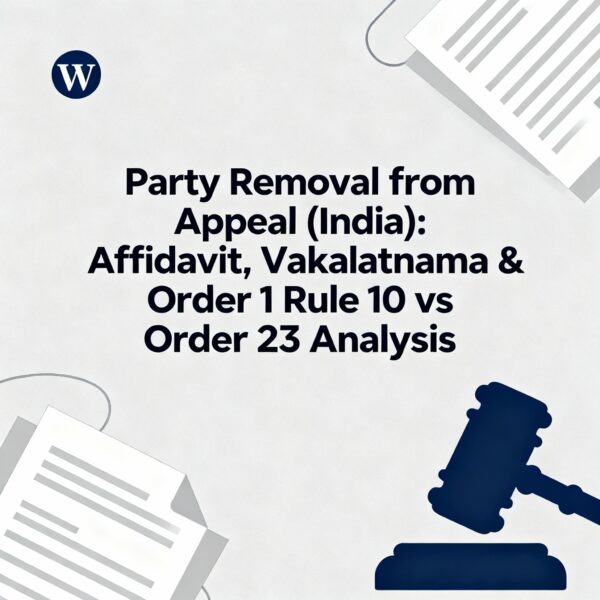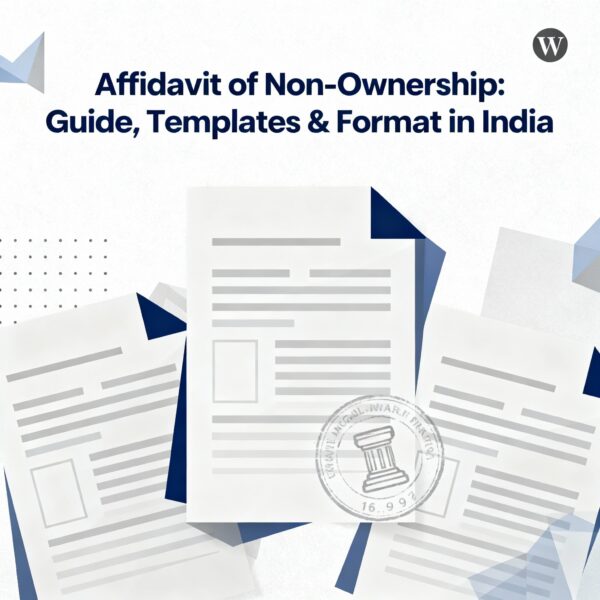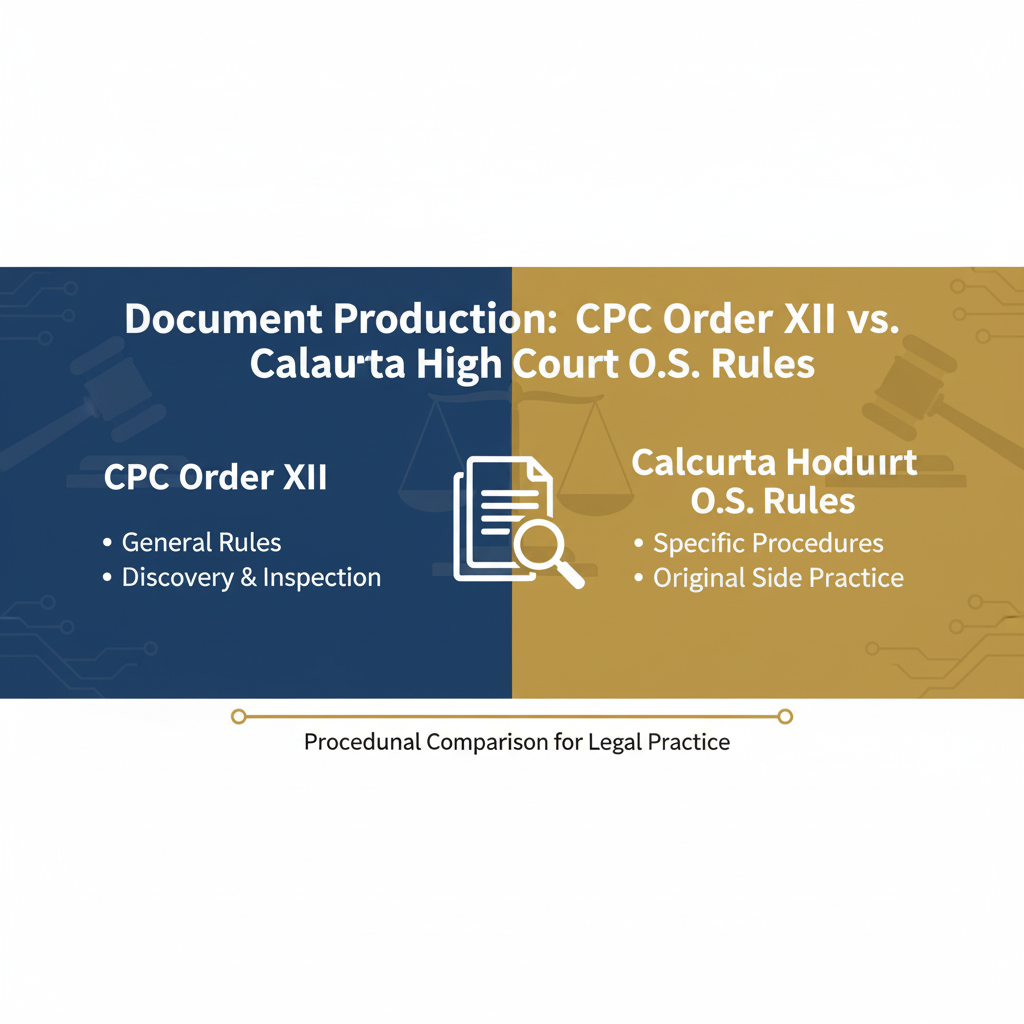Drafting an Interim Receiver Petition: Guide (Provincial Insolvency Act, 1920)
When a debtor commits an act of insolvency, a creditor’s primary concern is the immediate preservation of assets to prevent fraudulent transfers or waste. The most potent legal tool for this is the appointment of an Interim Receiver, a crucial remedy provided under Section 20 of the Provincial Insolvency Act, 1920, read with Order 40, Rule 1 of the Code of Civil Procedure, 1908. This comprehensive guide serves as a practitioner’s handbook, offering a deep dive into the legal framework, strategic considerations for drafting a successful insolvency petition, and the procedural nuances of filing. From analyzing landmark judgments to providing annotated multi-language templates, we cover everything you need to effectively protect your client’s interests and secure the debtor’s estate pending adjudication.
A Definitive Guide to Drafting and Filing a Petition for an Interim Receiver
Under the Provincial Insolvency Act, 1920 & Code of Civil Procedure, 1908
Last Updated: October 2025
The Legal Cornerstone
The appointment of an Interim Receiver is a critical pre-emptive measure to protect a debtor's estate. This power arises from the synergy of two key legislations: the Provincial Insolvency Act, 1920 (PIA) and the Code of Civil Procedure, 1908 (C.P.C.).
Synergistic Application: PIA & C.P.C.
Provincial Insolvency Act, 1920
Provides the substantive power and context (insolvency) via Section 20.
Code of Civil Procedure, 1908
Furnishes the procedural mechanism and the "just and convenient" standard via Order 40, Rule 1.
Trigger Point: Acts of Insolvency (Sec. 6, PIA)
A petition can only be filed if the debtor has committed an "act of insolvency" within three months before the petition. The most common acts include:
Fraudulent Transfer
Transferring property with the intent to defeat or delay creditors.
Fraudulent Preference
Transferring property to one creditor over others when unable to pay all debts.
Absconding
Departing from or remaining out of India, or secluding oneself to avoid creditors.
Property under Attachment
Having property sold or attached for more than 21 days in execution of a court decree.
Practitioner's Handbook
Insolvency Case Filings Analysis
While specific data for the Provincial Insolvency Act is not centrally compiled, we can analyze trends from the Insolvency and Bankruptcy Code, 2016 (IBC) to understand the landscape. The chart below shows the number of Corporate Insolvency Resolution Process (CIRP) cases admitted by major NCLT benches in recent years.
Source: Data is representative of figures from Insolvency and Bankruptcy Board of India (IBBI) annual reports.
Interim Receiver vs. Final Receiver: Key Distinctions
| Attribute | Interim Receiver | Final Receiver |
|---|---|---|
| Appointment Stage | After petition filing, before adjudication order. | After adjudication order. |
| Governing Section (PIA) | Section 20 | Section 56 |
| Primary Purpose | Preservation and protection of the estate. | Realization of assets and distribution to creditors. |
| Nature of Role | Custodian, protective role. | Administrative, with powers to sell property. |
Powers & Duties of an Interim Receiver
The Interim Receiver acts as an officer of the court, tasked with safeguarding the debtor's assets. While their powers are primarily protective, they are crucial for maintaining the status quo until the court adjudicates the insolvency petition.
Key Powers
- Take Possession: Secure control of the debtor's movable and immovable properties.
- Collect Dues: Collect rents, profits, and other receivables on behalf of the estate.
- Manage Property: Undertake necessary actions for the preservation and management of the assets.
Core Duties
- Furnish Security: Provide security as directed by the court for the value of the property.
- Maintain Accounts: Keep accurate and detailed accounts of all transactions.
- Act Impartially: Perform duties with neutrality, without favoring either the creditor or the debtor.
Strategy & Common Pitfalls
Successfully obtaining an order for an Interim Receiver requires more than just correct drafting; it demands strategic foresight. Avoiding common errors can be the difference between protecting assets and a dismissed application.
Do: Provide Specific, Credible Evidence
Vague allegations of "mismanagement" are insufficient. Support your claims with concrete evidence: photos of neglected property, copies of sale advertisements, affidavits from witnesses who observed attempts to remove assets, etc. The stronger the evidence of imminent danger, the more likely the court is to intervene.
Don't: Delay the Filing
The remedy is urgent and discretionary. Unexplained delays in filing the application after discovering the debtor's misconduct can weaken the argument of "irreparable harm." The court may infer that the situation was not as critical as claimed.
Do: Clearly Establish the Three Pillars
Your entire argument must rest on establishing a (1) Prima Facie Case (a strong, arguable case on merits), (2) Balance of Convenience (the creditor will suffer more if the receiver is not appointed), and (3) Irreparable Injury (harm that cannot be compensated by money).
Don't: Make it a Recovery Tool
An Interim Receiver is for preservation, not debt collection. Framing the petition as a coercive tool to recover money is a fatal flaw. The focus must always be on the preservation of the estate for the benefit of all creditors.
Landmark Judgments
The principles governing the appointment of a receiver are well-settled through judicial precedent. These landmark cases provide crucial guidance on the court's approach.
Krishnaswamy Chetty v. Thangavelu Chetty
AIR 1955 Mad 430
Laid down the five principles ('panch-sadachar') for the appointment of a receiver, emphasizing that it is a harsh remedy and should not be used as a substitute for an injunction or attachment. The focus must be on preventing manifest injury.
Benoy Krishna v. Satish Chandra
AIR 1928 PC 49
The Privy Council held that the court must be satisfied that the property is in danger of being wasted or damaged. The appointment must be "just and convenient," which means it is practical and serves the interests of justice.
Anatomy of a Winning Petition
A well-structured petition logically guides the judge from the establishment of the debt to the inescapable conclusion that an Interim Receiver is necessary. Each section builds upon the last, creating a compelling legal narrative.
Cause Title & Jurisdiction
Clearly state the court, parties, and the legal provisions (Sec 20 PIA & O. 40 R. 1 CPC). Crucially, assert territorial jurisdiction.
Factual Matrix
Narrate the story chronologically: origin of debt, default, recovery attempts, and the specific "act of insolvency" committed by the debtor.
Grounds for Interim Receiver
The core argument. Connect the facts to the "just and convenient" standard. Show imminent danger, risk of dissipation, and irreparable harm.
Prayer Clause
Precisely list the reliefs sought: appointment of receiver, conferment of powers, and directions for the debtor to hand over possession.
Legal Format Deep Dive
The petition for an Interim Receiver is formally structured as an Interlocutory Application (I.A.) within the main Insolvency Petition (I.P.). It must be supported by a sworn affidavit. Below is the standard court format.
I.A. Petition Format
// Start of Document
IN THE COURT OF [Name of the Court, e.g., THE DISTRICT JUDGE, CITY]
I.A. No. ______ of 20__
in
I.P. No. ______ of 20__
Between:
[Petitioner's Name] ... Petitioner/Creditor
And
[Respondent's Name] ... Respondent/Debtor
PETITION FILED BY THE PETITIONER UNDER SECTION 20 OF
THE PROVINCIAL INSOLVENCY ACT, 1920 READ WITH ORDER 40,
RULE 1, OF THE CODE OF CIVIL PROCEDURE, 1908
For the reasons stated in the accompanying affidavit, it is prayed that this
Hon'ble Court may be pleased to:
a) Appoint an Interim Receiver for the purpose of managing the properties
listed in the petition schedule.
b) Pass such other or further orders as this Hon'ble Court may deem fit
and proper in the circumstances of the case.
Place: [City]
Dated: [Date]
(Advocate for Petitioner)
// End of Document
Supporting Affidavit Format
// Start of Document
IN THE COURT OF [Name of the Court, e.g., THE DISTRICT JUDGE, CITY]
I.A. No. ______ of 20__
in
I.P. No. ______ of 20__
Between:
[Petitioner's Name] ... Petitioner/Creditor
And
[Respondent's Name] ... Respondent/Debtor
AFFIDAVIT FILED ON BEHALF OF THE PETITIONER
I, [Petitioner's Name], son/daughter of [Father's Name], aged about [Age] years,
residing at [Full Address], do hereby solemnly affirm and state as follows:
1. That I am the Petitioner herein and am well acquainted with the facts
and circumstances of this case.
2. That I have filed the main Insolvency Petition (I.P.) to adjudge the
Respondent as an insolvent.
3. That the Respondent, with a view to defeat and delay the claims of the
creditors, is mismanaging and attempting to alienate the properties
shown in the petition schedule.
4. (Narrate specific facts of the case, e.g., details of property, attempts
to sell, fraudulent transfers, etc., providing evidence where possible).
5. That as the I.P. has been admitted, it is just, convenient, and in the
interest of justice that an Interim Receiver be appointed to preserve and
manage the petition schedule properties pending the final outcome.
6. That if an Interim Receiver is not appointed, I will suffer irreparable
loss and the very purpose of the insolvency proceedings will be defeated.
DEPONENT
VERIFICATION
Verified at [City] on this [Day] day of [Month], 20__, that the contents
of the above affidavit are true to my personal knowledge.
DEPONENT
Solemnly affirmed and signed before me.
OATH COMMISSIONER / NOTARY PUBLIC
// End of Document
Annotated Templates
These model templates are for educational purposes. Always adapt them to the specific facts of your case under professional legal guidance.
[English Petition Template...]Frequently Asked Questions (FAQ)
Who can be appointed as an Interim Receiver? +
Typically, the court appoints an Official Receiver attached to the court. However, any impartial and independent person can be appointed. The creditor can suggest a name, but the court makes the final decision based on the person's fitness and lack of conflict of interest.
What is the cost involved in appointing a receiver? +
The petitioner (creditor) is usually required to deposit the receiver's proposed fees and expenses with the court in advance. These costs are considered part of the "cost of insolvency" and can potentially be recovered from the debtor's estate at a later stage.
Can the debtor challenge the appointment of an Interim Receiver? +
Yes. The debtor has the right to file a reply and object to the application. They can argue that there is no prima facie case, no risk of asset dissipation, or that the creditor's application is malicious. An order appointing a receiver is appealable.
How long does an Interim Receiver's appointment last? +
The Interim Receiver's appointment is temporary. It typically lasts until the main Insolvency Petition is decided—that is, until the court either dismisses the petition or passes an order adjudging the debtor as an insolvent. If an adjudication order is passed, a Final Receiver is then appointed.
The Path Forward
From Filing to Order: The Adjudication Process
1. Filing & Numbering
Petition is filed at the court registry and assigned a number.
2. Service of Notice
Court issues notice to the debtor, ensuring the right to be heard.
3. Hearing
Both parties present arguments on the necessity of the receiver.
4. Court's Order
Court passes a reasoned order appointing the receiver if "just & convenient".





